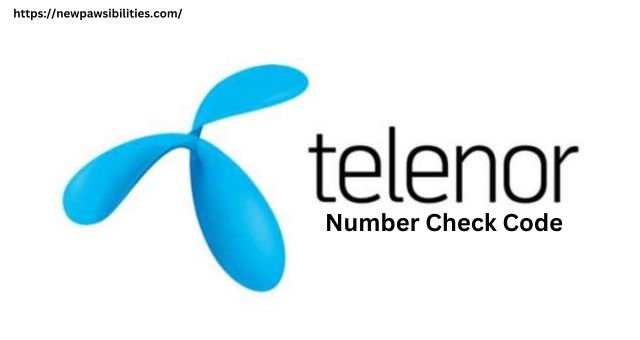The Role of Cybersecurity Planning in Protecting Customer Data

In today’s digital age, customer data is one of the most valuable assets a company can possess. As businesses increasingly rely on digital platforms to engage with customers and conduct transactions, the need to protect sensitive information has never been more critical. Cybersecurity planning plays a pivotal role in safeguarding customer data, and it is a key factor in maintaining trust in your brand. With the rise of data breaches and cyber threats, an effective cybersecurity strategy is no longer optional—it’s a necessity. This article will explore how comprehensive cybersecurity planning can protect customer data and help businesses maintain a trustworthy reputation.
Understanding Cybersecurity Planning
Cybersecurity planning involves a series of proactive steps and strategies designed to protect digital assets from cyber threats. This planning process is essential for identifying potential vulnerabilities, implementing security measures, and preparing for possible cyber incidents. Effective cybersecurity planning includes regular risk assessments, the development of a comprehensive security policy, employee training, and the deployment of advanced technological solutions.
The Rising Threat of Data Breaches
Data breaches have become a common occurrence in recent years, affecting organizations of all sizes across various industries. The consequences of a data breach can be severe, ranging from financial losses and legal repercussions to reputational damage and loss of customer trust. As cybercriminals become more sophisticated, the risk of a data breach increases, highlighting the need for robust cybersecurity planning. By understanding the evolving nature of cyber threats, organizations can better prepare to defend against them.
Protecting Customer Data Through Cybersecurity Planning
One of the primary objectives of cybersecurity planning is to protect customer data from unauthorized access, theft, or manipulation. Here are some of the ways effective cybersecurity planning can safeguard customer information:
1. Implementing Strong Access Controls
A key component of cybersecurity planning is establishing strong access controls. This involves setting up strict authentication and authorization protocols to ensure that only authorized personnel can access sensitive customer data. Multi-factor authentication (MFA) and role-based access controls (RBAC) are examples of measures that can significantly reduce the risk of unauthorized access. By limiting access to customer data, organizations can reduce the likelihood of internal and external threats.
2. Regular Security Audits and Assessments
Regular security audits and assessments are crucial aspects of cybersecurity planning. These processes involve reviewing existing security measures, identifying vulnerabilities, and evaluating the effectiveness of the current cybersecurity strategy. By conducting regular assessments, organizations can stay ahead of potential threats and make necessary adjustments to their cybersecurity plans. This proactive approach helps ensure that customer data remains secure, even as cyber threats evolve.
3. Data Encryption
Data encryption is another essential element of cybersecurity planning. Encryption involves converting sensitive information into an unreadable format, which can only be decrypted by authorized parties. This means that even if cybercriminals manage to access encrypted data, they will not be able to decipher it without the correct decryption key. Implementing strong encryption protocols helps protect customer data from being compromised, even in the event of a data breach.
Maintaining Trust in Your Brand
Maintaining customer trust is crucial for the long-term success of any business. When customers provide their personal information, they expect it to be handled with care and protected from potential threats. Effective cybersecurity planning helps build and maintain this trust by demonstrating a commitment to protecting customer data.
1. Demonstrating a Commitment to Security
Customers are more likely to trust businesses that demonstrate a commitment to cybersecurity. By investing in robust cybersecurity planning and openly communicating these efforts, businesses can reassure customers that their data is safe. This transparency fosters trust and confidence, which are vital for building long-lasting customer relationships.
2. Minimizing the Impact of Data Breaches
While no organization is entirely immune to cyber threats, effective cybersecurity planning can minimize the impact of a data breach. A well-prepared business can respond quickly to a breach, limit its scope, and mitigate potential damage. By having a robust incident response plan in place, organizations can quickly address any vulnerabilities and restore customer trust. This proactive approach not only helps protect customer data but also reinforces the brand’s commitment to security.
Building a Culture of Cybersecurity Awareness
An effective cybersecurity plan extends beyond technological solutions; it also involves building a culture of cybersecurity awareness within the organization. Employees play a crucial role in protecting customer data, and their actions can significantly impact the overall security posture of the business.
1. Employee Training and Awareness Programs
Cybersecurity planning should include comprehensive employee training and awareness programs. These programs educate employees about the importance of cybersecurity, common cyber threats, and best practices for safeguarding customer data. By fostering a culture of vigilance and responsibility, organizations can reduce the risk of human error, which is a common cause of data breaches.
2. Creating a Security-First Mindset
Creating a security-first mindset means integrating cybersecurity into every aspect of the business. This involves incorporating cybersecurity considerations into all decision-making processes, from product development to customer service. When cybersecurity becomes a core value, it is easier to implement effective cybersecurity planning that protects customer data and upholds the brand’s reputation.
The Role of Technology in Cybersecurity Planning
Technology is a critical component of cybersecurity planning. Advanced security technologies, such as artificial intelligence (AI) and machine learning (ML), can enhance an organization’s ability to detect and respond to cyber threats in real-time. By leveraging these technologies, businesses can improve their cybersecurity posture and better protect customer data.
1. AI and Machine Learning for Threat Detection
AI and ML are increasingly being used in cybersecurity planning to detect and mitigate threats. These technologies can analyze vast amounts of data to identify unusual patterns and potential threats. By detecting threats early, organizations can respond quickly and prevent data breaches before they occur.
2. Advanced Threat Protection Solutions
Advanced threat protection solutions, such as intrusion detection systems (IDS) and intrusion prevention systems (IPS), are also essential components of cybersecurity planning. These solutions monitor network traffic for signs of malicious activity and can automatically take action to block or mitigate threats. Implementing these technologies can help organizations protect customer data from cyberattacks and maintain trust in their brand.
Conclusion
Cybersecurity planning is crucial in protecting customer data and maintaining trust in your brand. With the increasing frequency and sophistication of cyber threats, businesses must adopt a proactive approach to cybersecurity. By implementing strong access controls, conducting regular security audits, encrypting data, and building a culture of cybersecurity awareness, organizations can effectively safeguard customer information. Additionally, leveraging advanced security technologies can enhance an organization’s ability to detect and respond to threats, further protecting customer data. Ultimately, a comprehensive cybersecurity plan not only protects customer data but also reinforces trust and confidence in your brand, paving the way for long-term success.
Read More: Keep Your Travel Memories Forever











